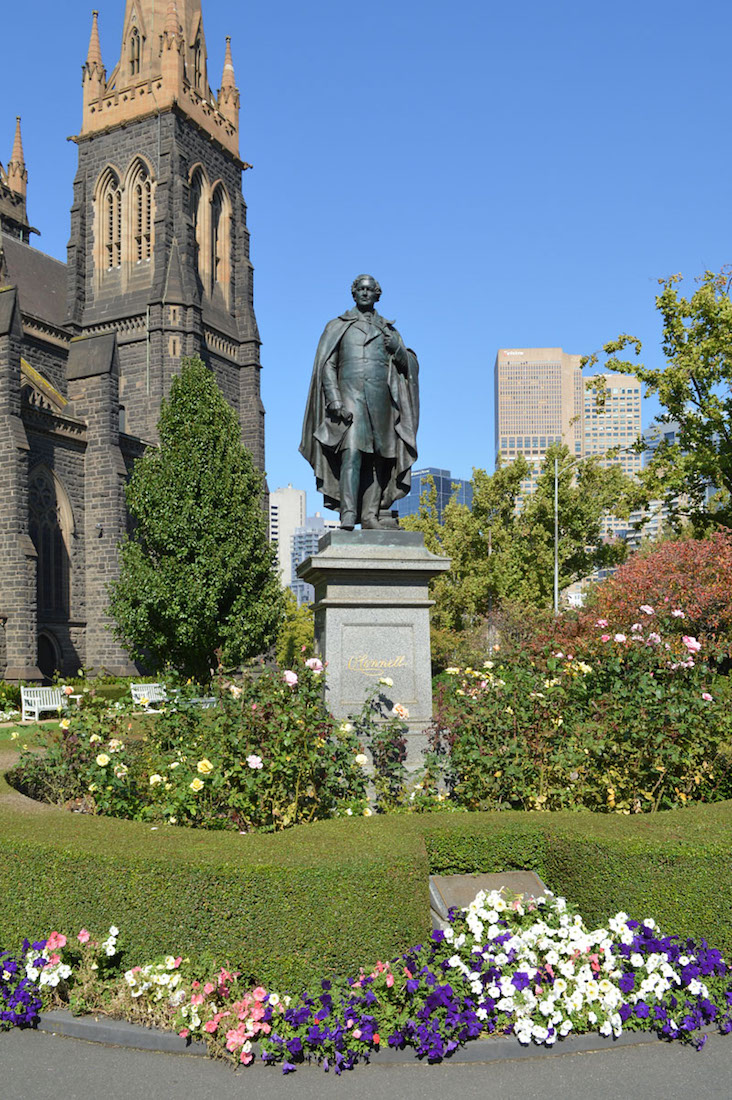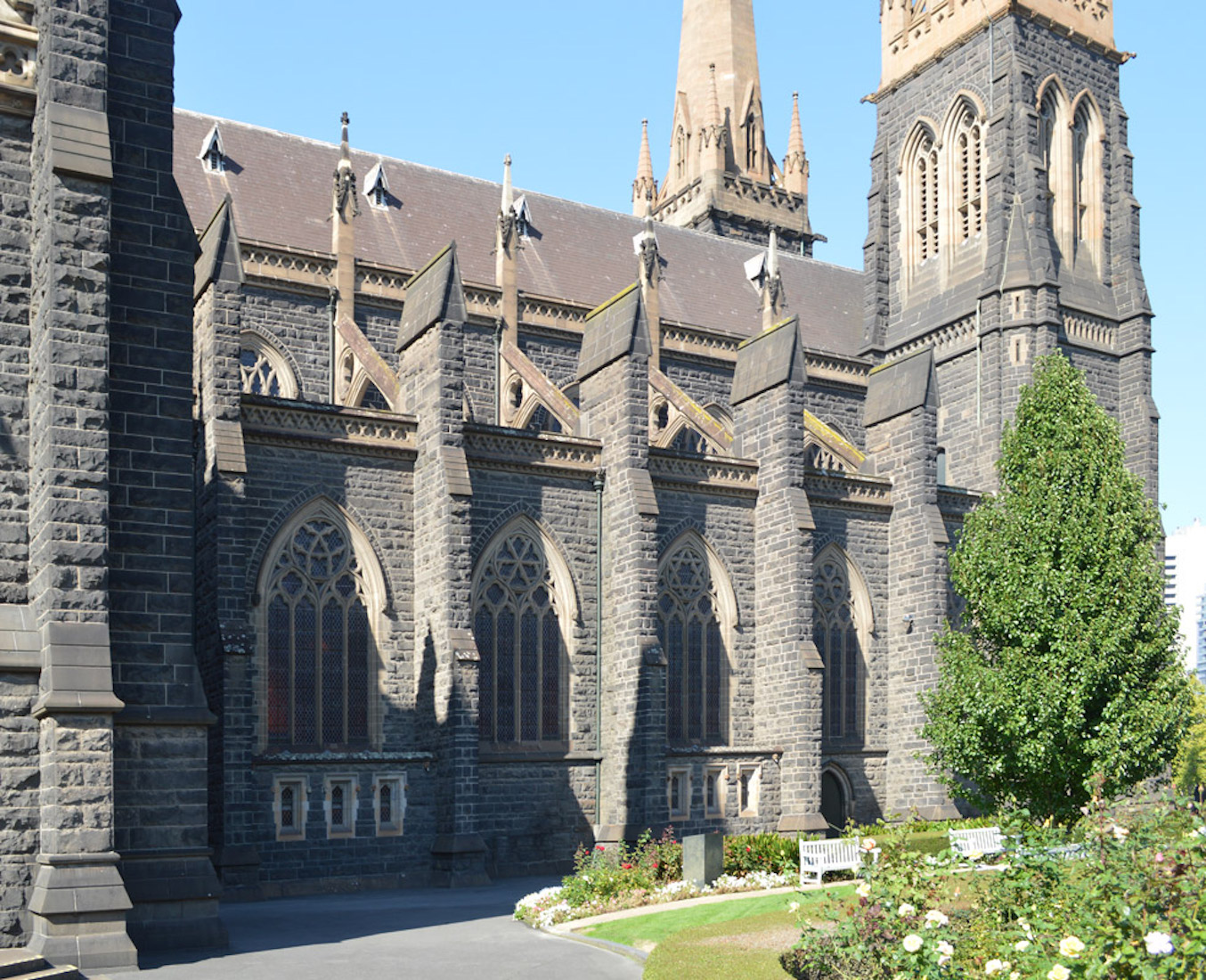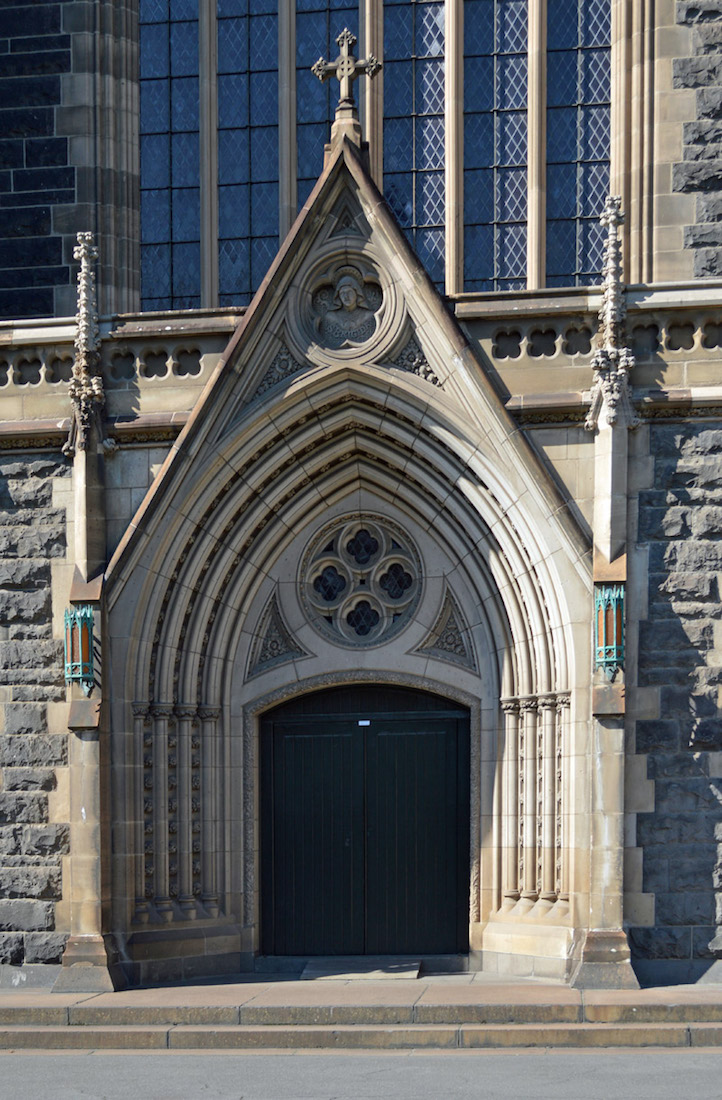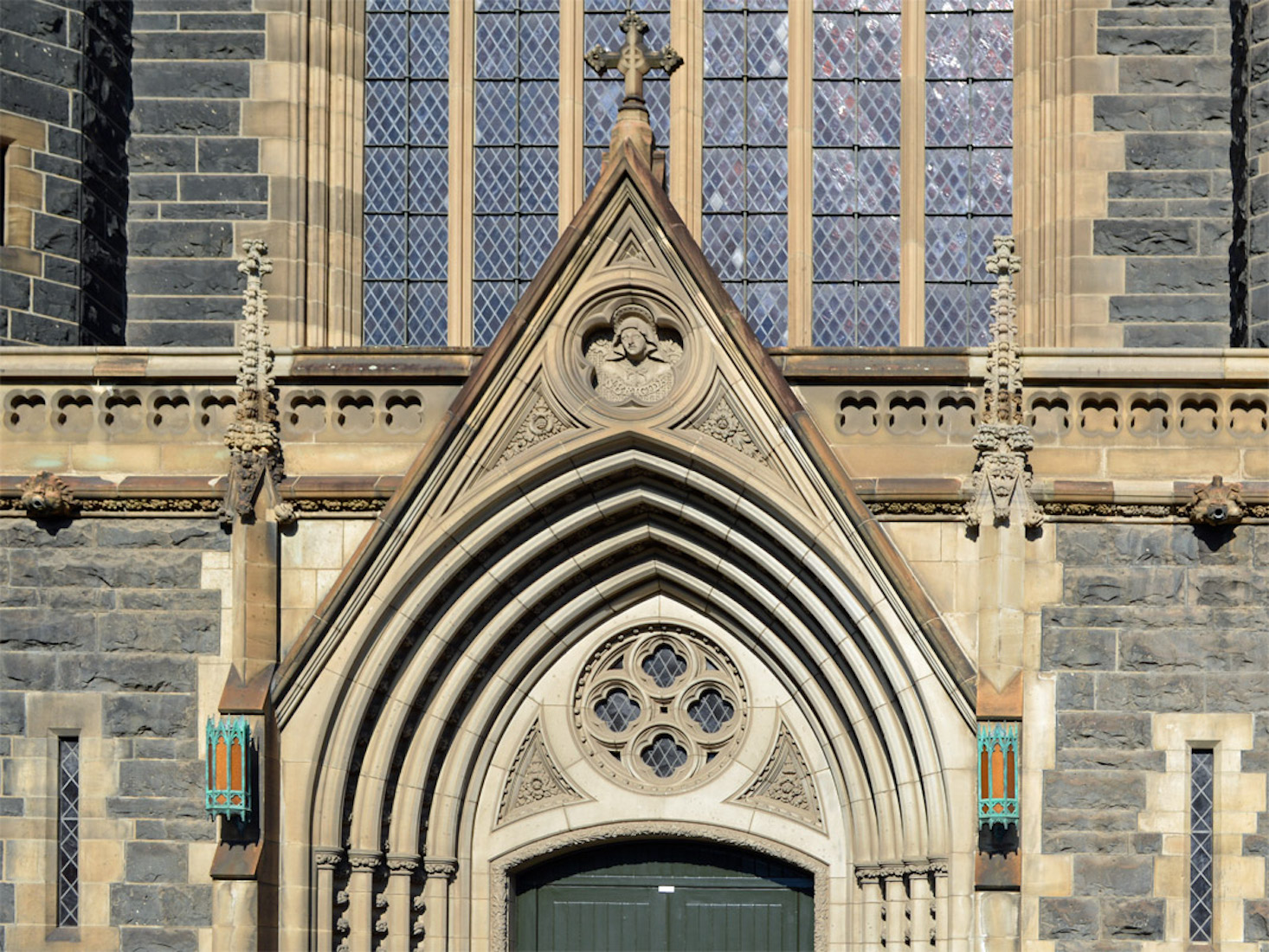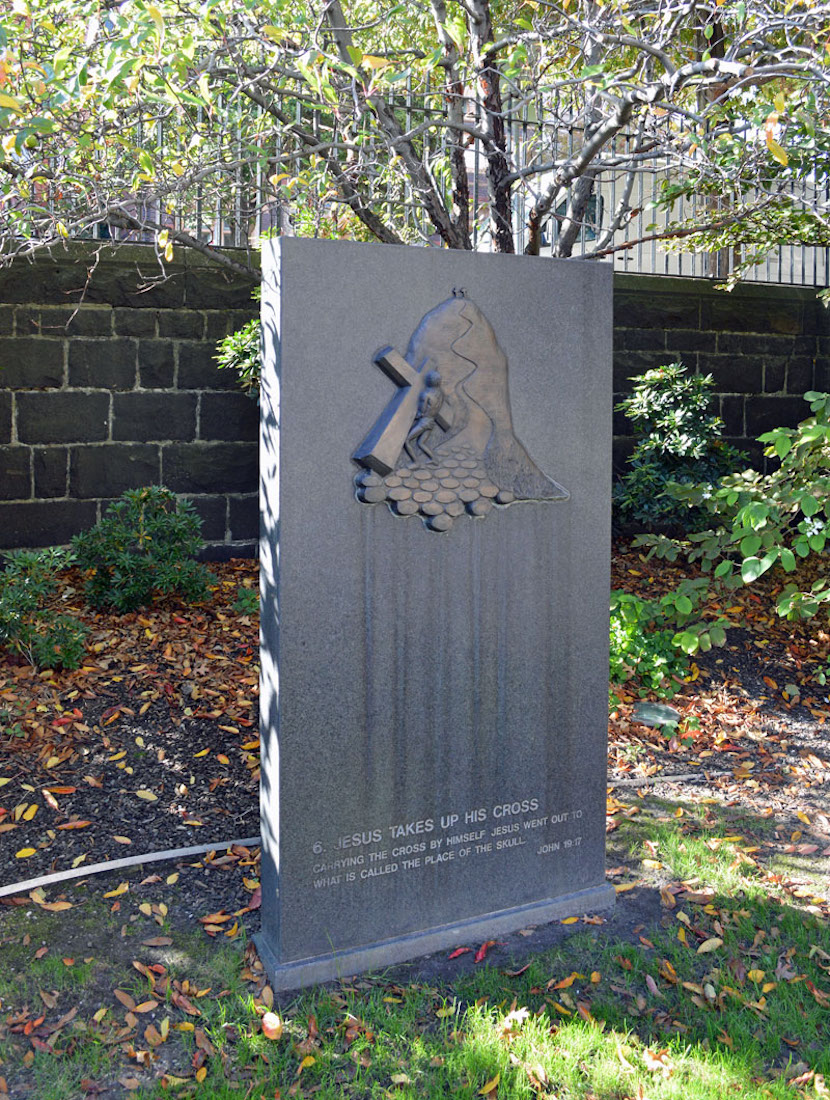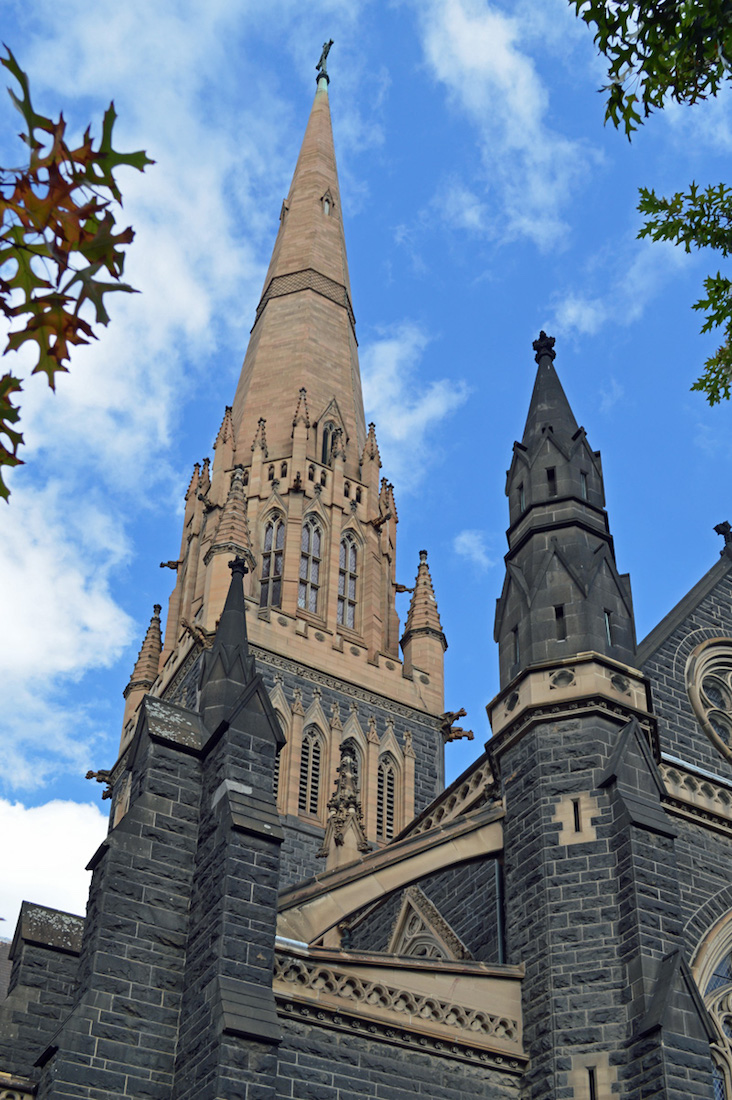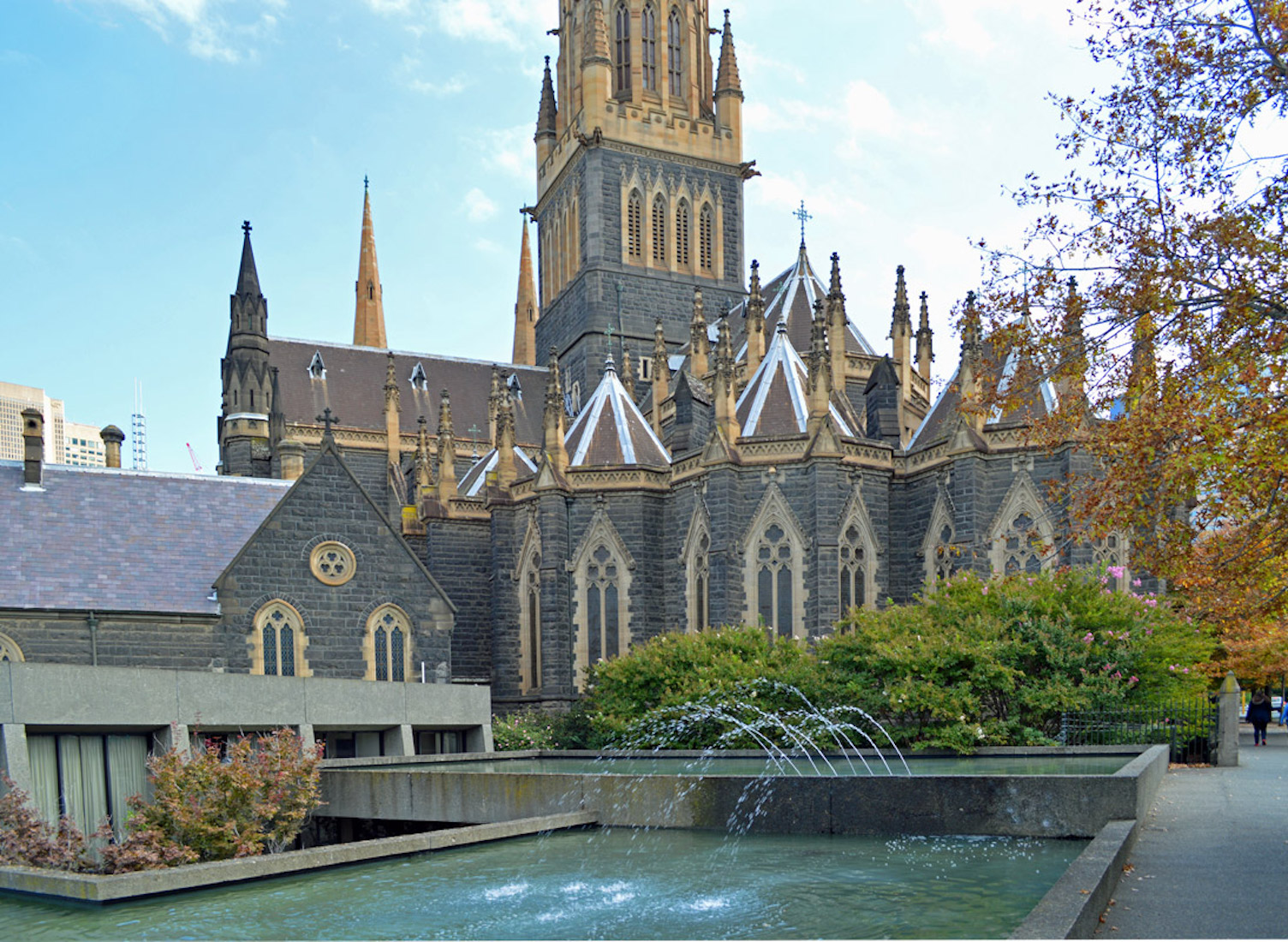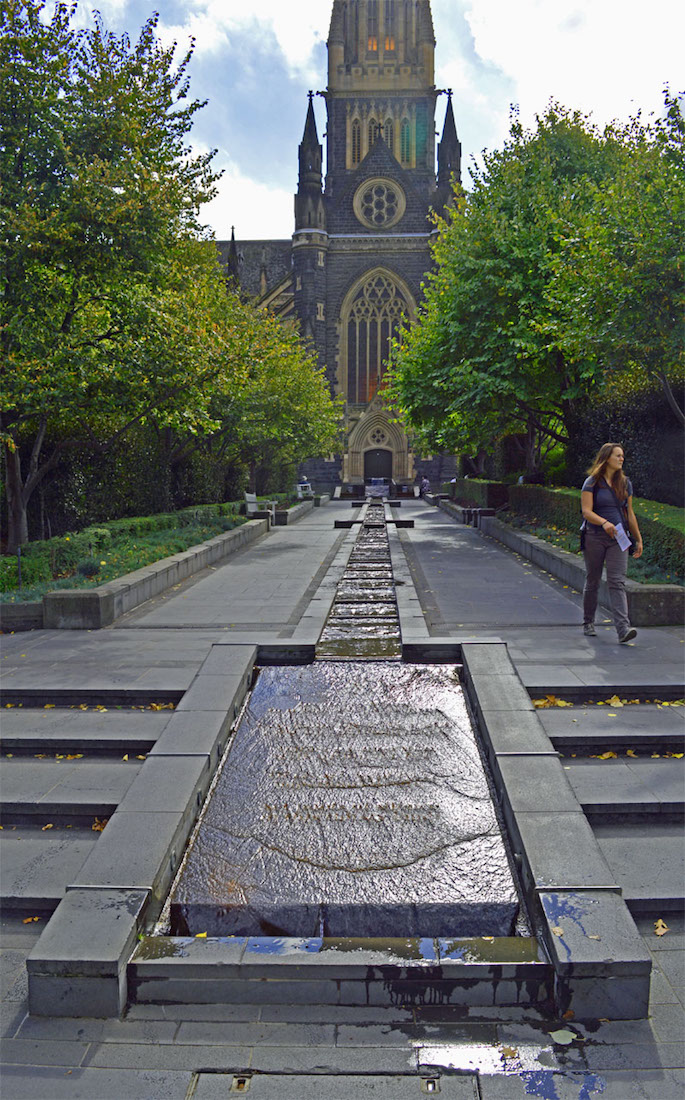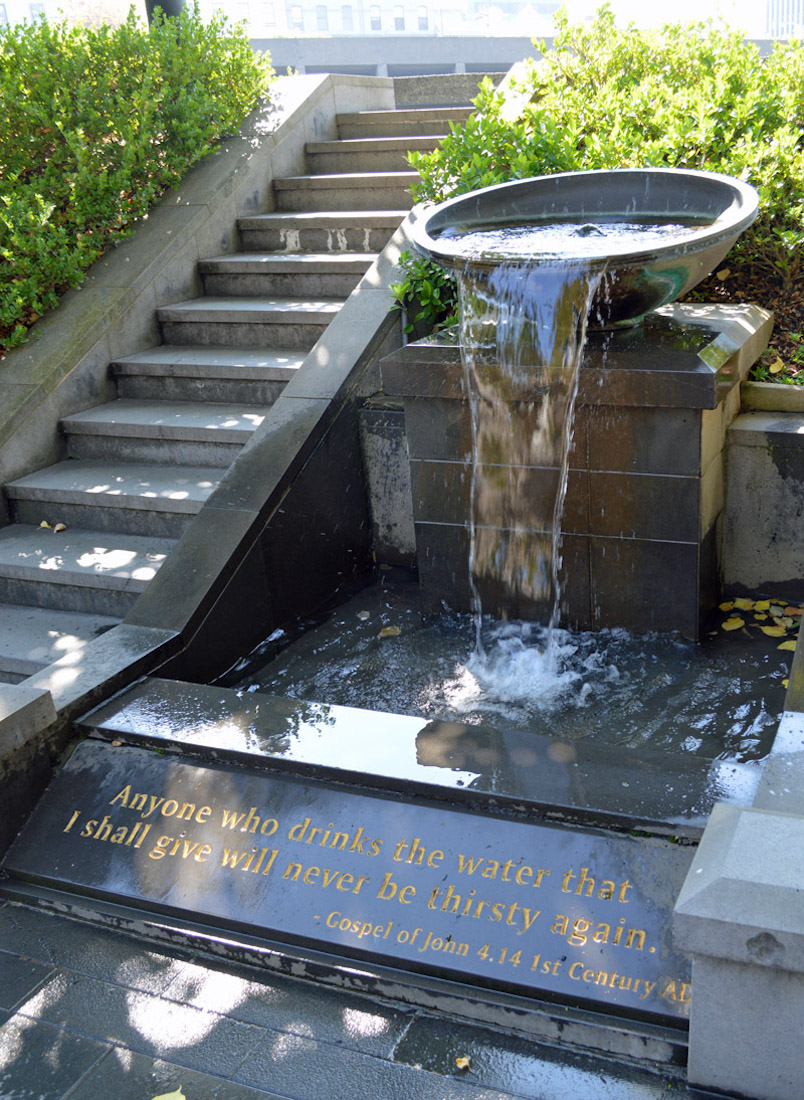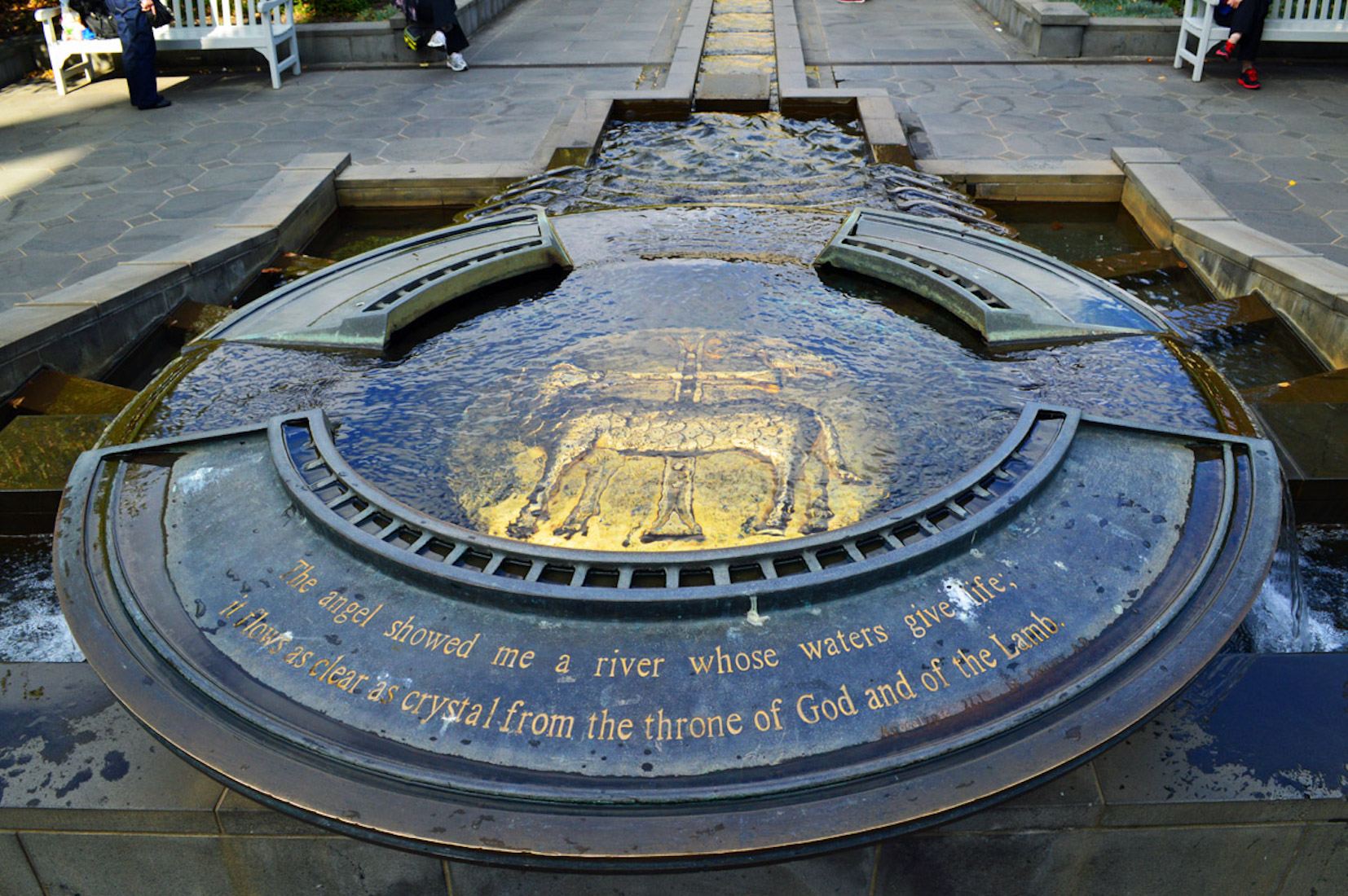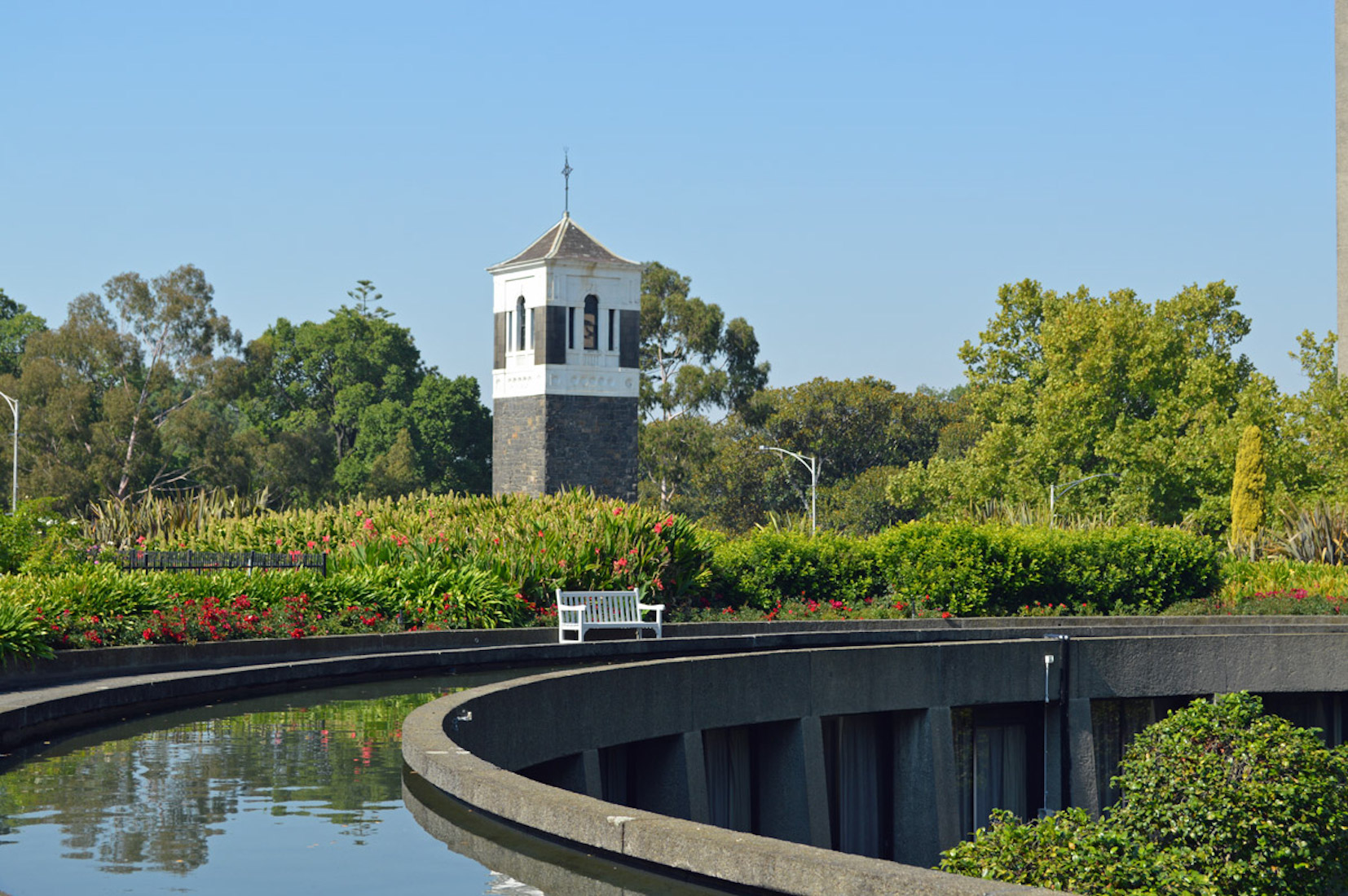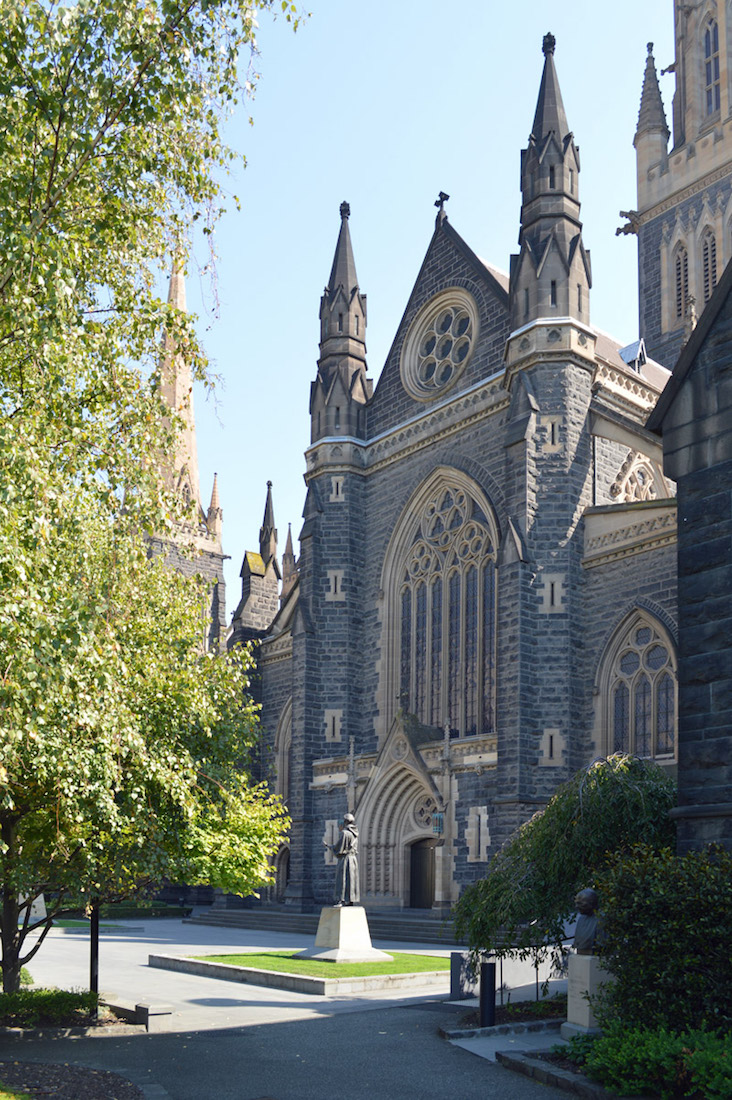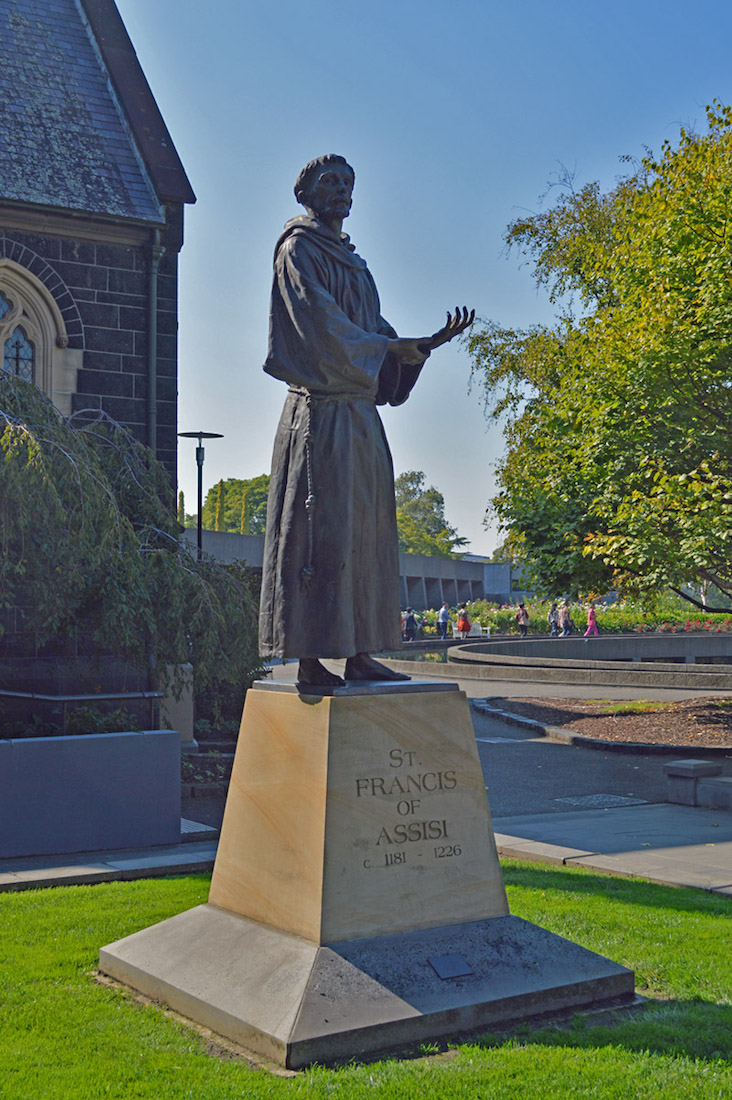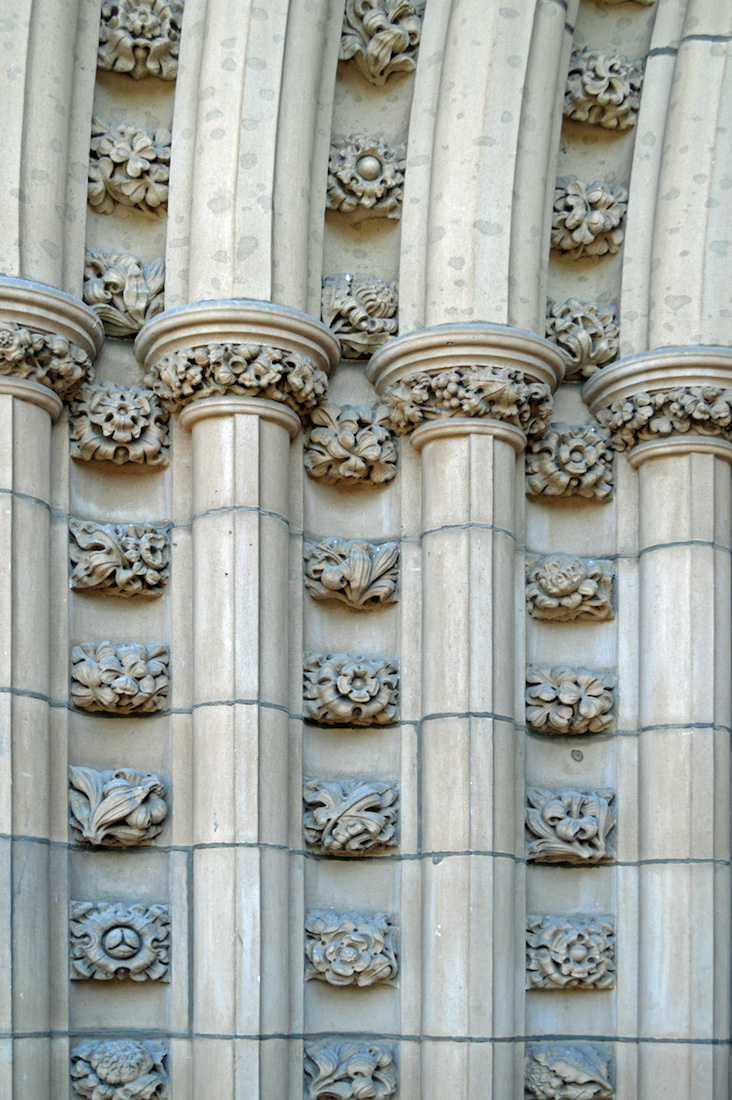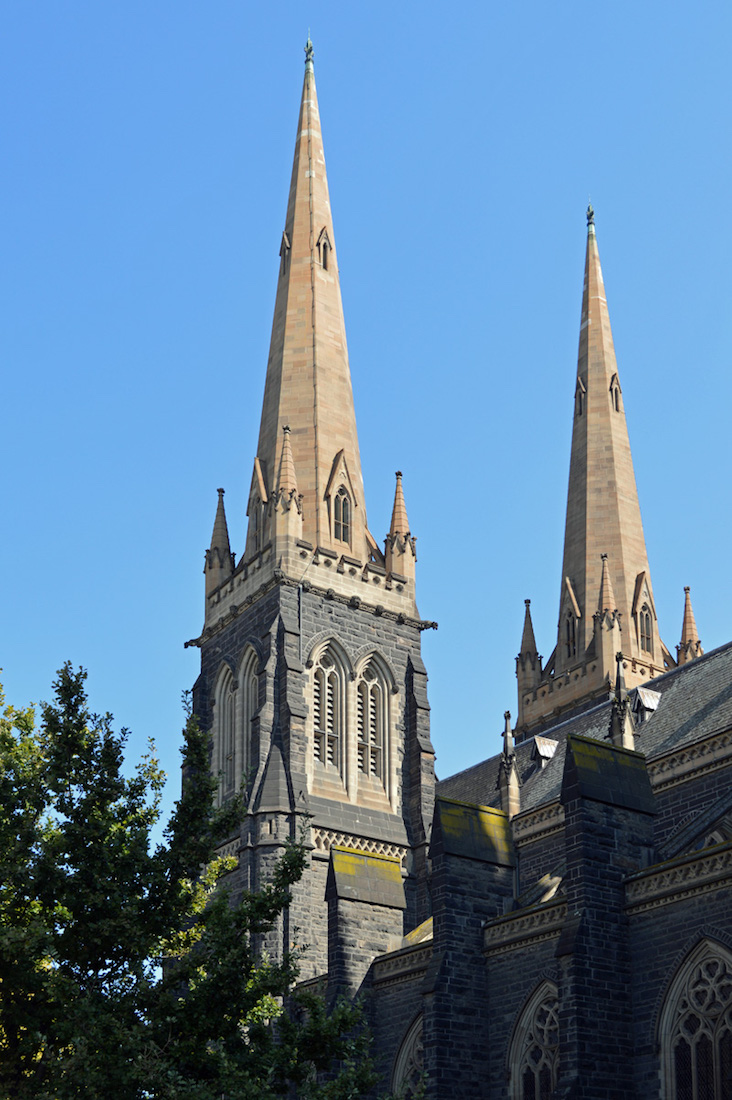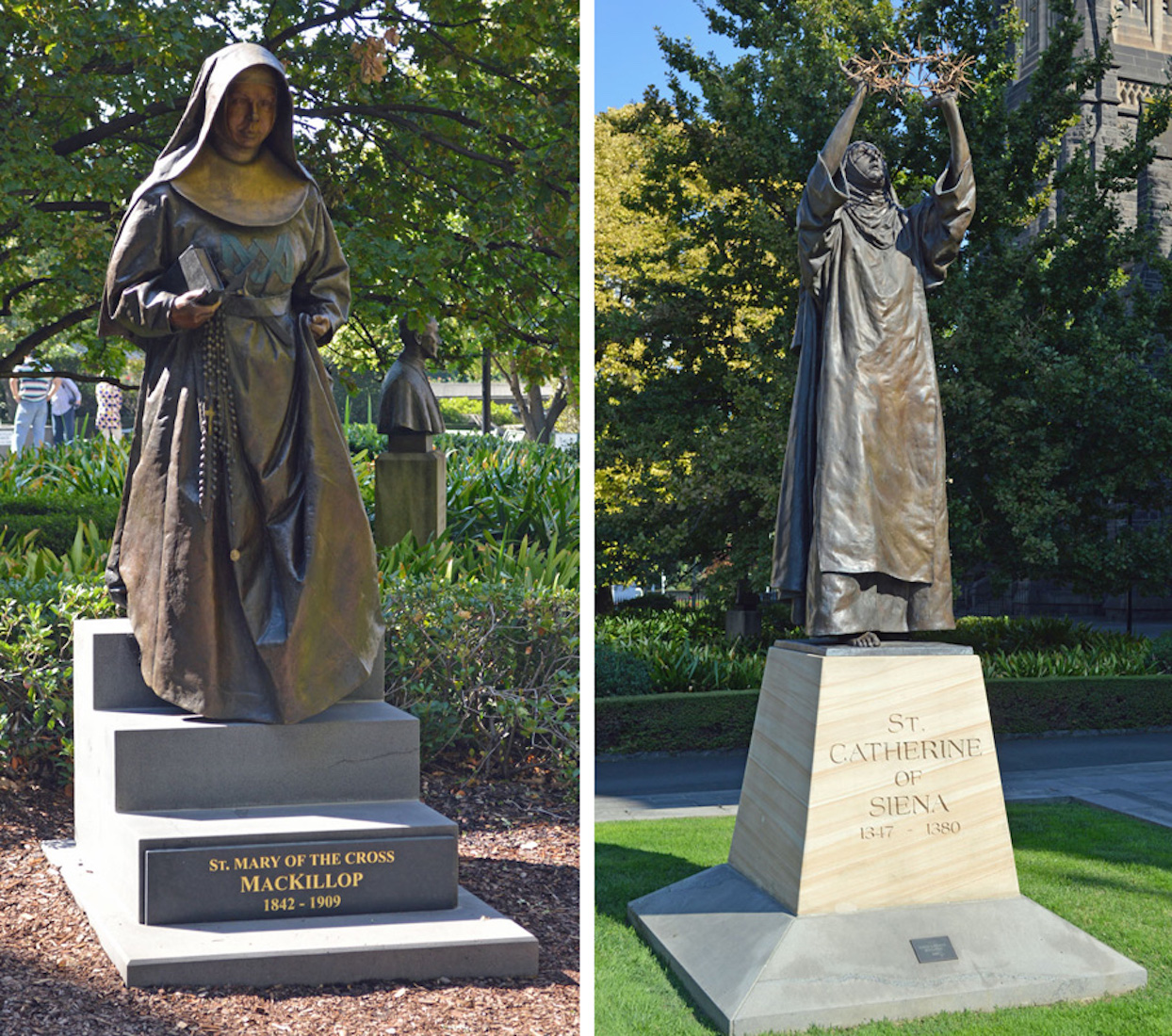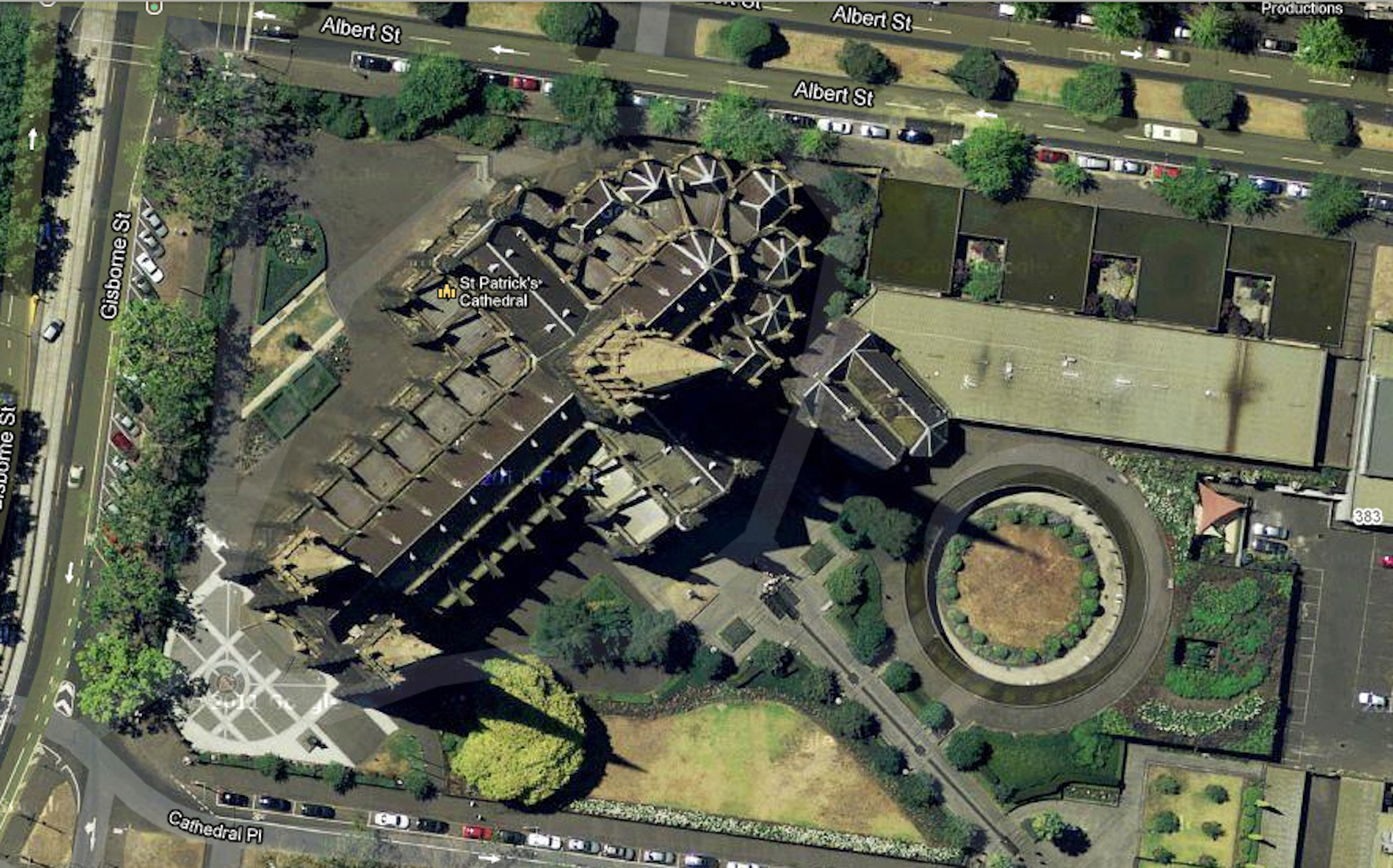
St Patrick’s Cathedral lies east of the Melbourne commercial heart. We notice that the Cathedral’s liturgical East lies almost exactly in a north-east direction. We observe the cruciform shape, the seven chapels at the Eastern end, and the uncommon three spires. We notice too the long straight water course flowing down from the South Transept, the circular pool and garden area, and the rectangular water feature adjacent to Albert Street. This Cathedral has an abundance of interesting features, inside and out. PLAN
2. DISTANT VIEW
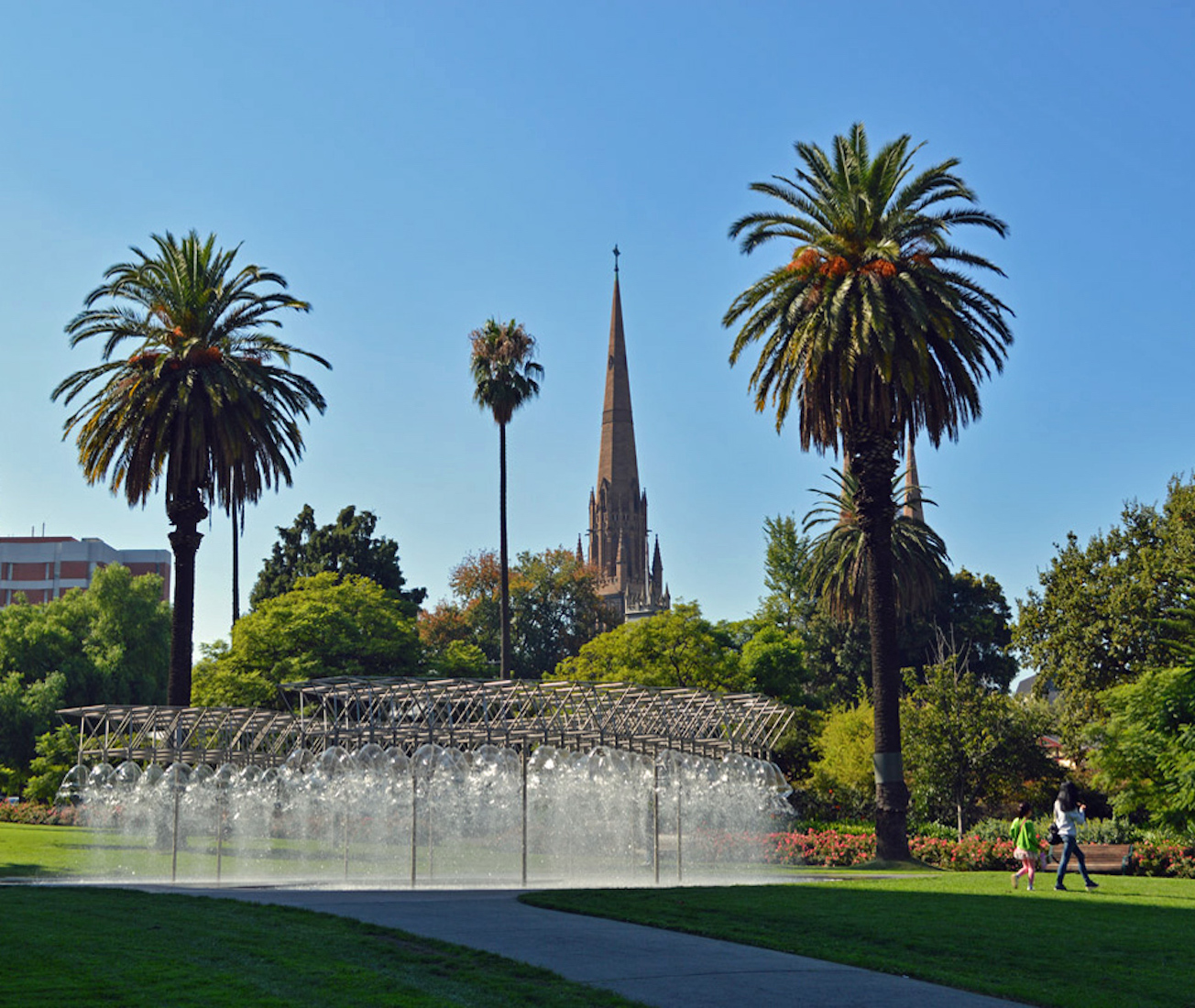
If we alight from the tram at Parliament House, and walk through Parliament Gardens, we get this enticing view of St Patrick’s. It looks as though the Cathedral is set in this park, but in fact this is not the case, as we shall discover.
3. WEST TOWERS
The Western spires and towers are just under 62 metres high. St Patrick’s Cathedral is constructed mainly of bluestone. This is a very hard stone, making it difficult to carve. Hence the more ornate work is executed in softer brown sandstone. The two different media work well together, forming a pleasing contrast.
4. O’CONNELL STATUE
We begin our exploration of the Cathedral by walking around the North side. Here we find a statue of Daniel O’Connell who lived from 1775 to 1847. He is often referred to as The Liberator or The Emancipator, and was an Irish political leader in the first half of the 19th century. He campaigned for Catholic Emancipation – including the right for Catholics to sit in the Westminster Parliament, denied for over 100 years – and repeal of the Act of Union which combined Great Britain and Ireland.
5. NORTH WALL
The North Wall is notable for its flying buttresses, reaching over the aisle roofs to take the stress off the Nave walls. This is a well known feature of Gothic architecture. We note the confessionals built beneath two of the nave windows.
6. NORTH DOOR
There are three major entrances to St Patrick’s Cathedral: the great West door, and the two transept doors. The doorways are very similar in style, but there are some distinctive differences.
7. NORTH DOOR GABLE
The North transept door sits within a nested set of decorated Gothic arches. The arches lie within a gable which is capped by an ornamental cross. At the apex of the gable, St Brigida looks out – her name appears in embossed letters below the figure. Saint Brigida (Brigit) of Kildare lived around 451 to 525. She is also known as Brigit of Ireland, and is one of Ireland’s patron saints along with Patrick and Columba.
8. STATION OF CROSS
On the Northern side of the Cathedral are two sculptures which are part of the Ecumenical Way of the Cross. All fourteen stations of the Cross were sculpted by Anna Meszaros and sponsored by Melbourne’s city churches. Every Good Friday, Jesus’ Way of the Cross is walked by members of the congregations of Melbourne’s Christian churches. The sculptures stand in testimony to the continued friendships between the various denominations which developed from very early in the establishment of the Colony.
9. EAST PARAPET
As we follow the road around towards the East of the Cathedral, we see that each of the Eastern chapels is capped by an octagonal pyramid roof. The outer vertices are marked by these curious decorated pinnacles ornamented with crockets and finials.
10. SPIRE VIEW
This is a Southeastern view of the main spire, which towers 105.8 metres to the top of its Cross. Although the Cathedral’s 103.6 metre length is marginally shorter than that of St Mary’s Cathedral in Sydney, St Patrick’s has the distinction of being both the tallest and, overall, the largest church building in Australia.
11. SOUTHWEST VIEW
Walking along Albert Street we obtain a fuller picture of the layout of the Cathedral. Behind the pleasant water feature we see some of the chapels which surround the sanctuary. The fine cross marks the end of the main gable, which is also surrounded by pinnacles. At left is the South transept, and the smaller building in front contains the sacristies.
12. WATER WAY
Walking right around Landsdowne St and back up Cathedral Place we come to the end of the Water Way, or Pilgrim Path – a wide path to the South transept door divided by a delightful flow of water over a sequence of small drops. The plaque at the bottom has a Paternoster symbol, and below reads: Incarnate Word // in whom all nature lives, // Cast flame upon the earth // Raise up contemplatives // Among us men who // walk within the fire // Of cascades prayer, impetuous desire, // Set people of silence // in this thirsty land. James McAuley (1917 – 1976) Australian poet. © Copyright James McAuley
13. WATERFALL
As we walk up the Pilgrims’ Way towards the South transept, there are a couple of places where water pours in from the side. The inscription for this one contains the words of Jesus: Anyone who drinks the water that I shall give will never be thirsty again’. – Gospel of John 4.14 1st Century AD
14. SOURCE
Continuing to the top of the Water Way we reach the source: a round disk spilling into a pool. At the bottom of the disk is a golden image of the Lamb of God, and the verse reads: ‘The angel showed me a river whose waters give life, it flows as clear as crystal from the throne of God and of the Lamb.’ This whole water feature, created by landscape architects Green and Dale is beautiful and inspirational.
15. POOL AND TOWER
Close by the Pilgrim Way is a round reflecting pool in the form of a torus. It conceals office accommodation beneath, placed below ground level so as not to detract from the prominence of the Cathedral. Also in this photo is a square tower – perhaps an old bell tower?
16. SOUTH TRANSEPT
So we arrive at the South transept of the cathedral, with its inviting doorway. It is similar in structure to the North transept, but here the overlooking figure is that of St Patrick. On this side of the pathway to the doorway we see a statue of St Francis of Assisi.
17. ST FRANCIS
St. Francis of Assisi, 1181/1182 – 1226 was an Italian Catholic friar and preacher. He founded the men’s Order of Friars Minor, the women’s Order of St. Clare, and the Third Order of Saint Francis for men and women not able to live the lives of itinerant preachers followed by the early members of the Order of Friars Minor or the monastic lives of the Poor Clares. Though he was never ordained to the Catholic priesthood, Francis is one of the most venerated religious figures in history.
18. TRANSEPT DOOR DETAIL
The arches surrounding the three main doors are all finely sculpted. This close-up of the South transept doorway shows an array of botanical creations!
19. SPIRES
We now leave the South transept and move towards the West spires of the Cathedral. The Southern tower houses the bells of the Cathedral. The bells are thought to be unique in a number of ways. They were cast untuned, they ring in an anti-clockwise direction, and they are thought to be the only ring of eight bells cast by Murphy’s bell foundry in Dublin which are still in operation today.
20. MARY AND CATHERINE
Opposite the statue of St Francis is a statue of Catherine of Siena (1347 – 1380) holding up a crown of thorns. These two statues of the patron saints of Italy were sculpted by the Melbourne - based artist Louis Lauman. They commemorate the considerable contribution Italians have made to the Melbourne Archdiocese and to Australian culture generally. Nearby is a statue of Mary Helen MacKillop, also known as St Mary of the Cross, RSJ. She was an Australian of Scottish descent who has been declared a saint by the Catholic Church. She was a founder of the Sisters of St Joseph of the Sacred Heart, a congregation of religious sisters which established a number of schools and welfare institutions throughout Australasia, with an emphasis on education for the rural poor.



